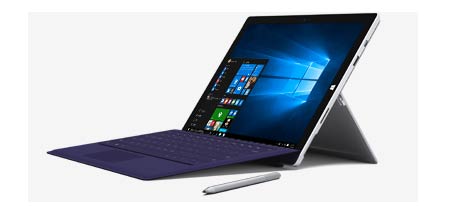Microsoft, which has been looking to turn around its fortunes for many years, may have found a path forward. That path involves the serendipitous, at least from Redmond’s point of view, meeting of its hot Surface line of hybrid “2-in-1s” and the related sea change in the tablet market.
It’s clear that traditional tablet sales are fading, at least on the consumer side. That slowdown is being matched by an increase in sales of 2-in-1 detachable devices. Strategy Analytics’ “Tablet & Touchscreen Strategies” research pointed out the trend: The overall tablet sector will experience a compound annual growth rate (CAGR) of only 2 percent during the next five years. However, the CAGR for the 2-in-1 subsector will enjoy a 57 percent CAGR.
The rising fortunes of 2-in-1s in the overall tablet market are occurring at a time when Microsoft is expanding its footprint in the category. Part of the reason is that the area in which tablets in general remain strongest is the enterprise. The real hemorrhaging in the sector is on the consumer side. Windows, of course, remains a dominant enterprise operating system – and one that will be given a push by the introduction of Windows 10. So tablets are growing in an area in which Microsoft excels.
The Motley Fool takes a look at the slightly narrower issue of how Microsoft’s Surface 2-in-1 family stacks up against Apple’s iPad. The bulk of the story deals with the problems the iPad is experiencing and what Apple must do to right the ship. However, one part of the commentary points to Microsoft’s significant structural advantage:
The Surface and similar 2-in-1 Windows devices are popular replacements for traditional laptops, especially among enterprise customers. The iPad’s main weakness in enterprise is its incompatibility with older Windows software. As a result, many companies upgrade older computers to 2-in-1 Windows devices instead of iPads. For certain jobs that require mobility — like healthcare professionals or factory floor managers — 2-in-1 devices eliminate the need to use both a PC and a tablet.
Microsoft may not be the monolith it once was, but it certainly is a savvy player. The goal now is to build on its 2-in-1 advantage. The Verge reports that the company is planning a “massive” event in October in which three products will be introduced: the Lumia 950, the Lumia 950 XL and the Surface Pro 4. The story ties together what Microsoft has said with informed speculation and suggests that the new Surface Pro will not be a radical departure from previous models but will include sweeteners such as a display that is larger and has more resolution and a body that is thinner and lighter.
Carl Weinschenk covers telecom for IT Business Edge. He writes about wireless technology, disaster recovery/business continuity, cellular services, the Internet of Things, machine-to-machine communications and other emerging technologies and platforms. He also covers net neutrality and related regulatory issues. Weinschenk has written about the phone companies, cable operators and related companies for decades and is senior editor of Broadband Technology Report. He can be reached at [email protected] and via twitter at @DailyMusicBrk.




